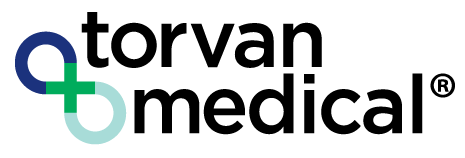Introduction
Hospitals are under unrelenting pressure. Increasing patient demand, staffing shortages, and tighter operating budgets require healthcare providers to do more with less. For hospital administrators, the answer lies in improving operational efficiency: eliminating waste, minimizing delays, and improving workflows.
Operational inefficiencies may directly impact a hospital’s patient outcomes, staff morale, and financial sustainability. When reprocessing bottlenecks delays surgical instruments, or when equipment breakdowns halt procedures, the delivery of care may slow and costs may rise.
Optimizing efficiency isn’t just about speed. It’s about reliability, consistency, and safety. Strategic upgrades to infrastructure, particularly in sterile processing departments (SPDs), can deliver compounding value. In this guide, we explore ten practical ways hospitals can improve operational efficiency, with a focus on areas where modular, ergonomic, and automation-ready solutions by Torvan Medical have the most impact.
What Is Hospital Operational Efficiency?
Operational efficiency refers to a hospital’s ability to deliver high-quality care using the optimal amount of time, labor, equipment and space. Efficiency doesn’t mean cutting corners, it means doing more with smarter processes that reduce waste, prevent delays and improve consistency.
Areas impacted by operational efficiency may include:
- Sterile Processing & Instrument Reprocessing
- Endoscope Cleaning & Storage
- Ergonomic Workspaces for SPD Staff
- Maintenance and Equipment Life Cycle Management
- Workflow Design and Department Layout
- Infection Prevention and Material Cleanability
Improving hospital operational efficiency requires an integrated approach: automation where possible, ergonomic design to reduce physical strain, modularity for adaptability, and data to guide continuous improvement.
10 Ways to Improve Hospital Operational Efficiency
- Automate instrument reprocessing workflows
- Reduce workflow delays with ergonomic equipment
- Streamline scope reprocessing and storage
- Design efficient workspaces using pre-planning tools
- Reduce equipment downtime with modular systems
- Improve waste management and sustainability
- Use durable, cleanable equipment to extend lifespan
- Centralize reprocessing functions
- Standardize procedures across departments
- Monitor KPIs and continuously optimize workflows
10 Practical Ways to Improve Hospital Operational Efficiency
1. Automate Instrument Reprocessing Workflows
Reprocessing surgical instruments is labor-intensive and prone to variability when done manually. For lumened instruments, flushing is a critical but often inconsistent or omitted step.
The TPS Flushing Pump helps ensure uniform flushing pressure, time, and flow for every instrument. The TPS Flushing Pump helps reduce technician variability, prevent under- or over-cleaning, and potentially free up staff for higher-value tasks.
Potential Operational Benefits:
- Support regulatory compliance by standardizing a critical cleaning phase
- Decrease reprocessing time per tray
- Support regulatory compliance by standardizing a critical cleaning phase
2. Reduce Workflow Delays with Ergonomic Equipment
Musculoskeletal injuries are among the top causes of healthcare worker absenteeism. In the SPD, repetitive movements, awkward postures, and heavy lifting are common.
Ergonomic Workstations – featuring electromechanical height adjustment – help technicians work comfortably, whether seated or standing. Adjustable shelving, tilting work surfaces, and customizable workspace further minimize physical strain.
Potential Operational Benefits:
- Improve technician productivity and comfort
- Reduce injury-related absences and worker’s comp claims
- Support lean workflow design by eliminating wasted movement
3. Streamline Scope Reprocessing & Storage
Flexible endoscopes are complex, high-value medical devices that require meticulous cleaning and drying. Improper handling or storage can result in contamination, damaged or lost scopes, and delayed procedures.
EndoCab™ provides fast, HEPA-filtered drying and secure, organized storage for multiple scopes in a compact footprint. Its modular internal layout accommodates various scope types and lengths, while exterior digital screens provide real-time status updates. Controlled access provides a level of security for scope traceability.
Potential Operational Benefits:
- Accelerate scope turnaround time
- Reduce cross-contamination risk
- Keep scopes traceable and ready for use, improving scheduling efficiency
4. Design Efficient Workspaces with Pre – Planning Tools
A poorly designed reprocessing department can add hours of wasted time each week. Congested hallways, redundant steps, or hard-to-access equipment may all impede efficiency.
Workspace planning expertise allows facility planners to collaborate on department layouts, helping ensure the right balance between defined work zones (dirty-to-clean flow), storage space, and human movement or traffic patterns.
Potential Operational Benefits:
- Improve traffic flow and material handling
- Reduce time per instrument set processed
- Enable proactive design before renovations or expansions
- Identify potential bottle necks during reprocessing
5. Reduce Equipment Downtime with Modular Systems
Traditional fixed cabinets and workstations are costly to repair or replace. When a single component fails, entire units may be taken offline, disrupting SPD operations.
Modular cabinetry and workstations allow hospitals to swap individual components – doors, drawers, countertops – without interrupting workflow.
Potential Operational Benefits:
- Speed up maintenance or equipment reconfiguration
- Reduce capital replacement costs
- Increase uptime for essential SPD work areas
- Maintain interface with current systems
6. Improve Waste Management & Sustainability
Disposable instruments and packaging drive up both cost and waste volume, but hospitals that switch to reusable instruments must ensure they’re cleaned and reprocessed efficiently.
The AquaBrush System from Torvan allows for safe and repeatable pre-cleaning of reusable instruments while helping prevent aerosolized splashing, protecting both the technician and the environment.
Potential Operational Benefits:
- Reduce volume of biohazardous waste
- Minimize reliance on disposables
- Support hospital sustainability goals and ESG reporting
7. Use Durable, Cleanable Equipment to Extend Lifespan
Hospital environments are tough on equipment. Surfaces need to withstand constant cleaning with hospital-grade disinfectants. Over time, poorly made equipment degrades, cracks, or harbors bacteria.
Torvan’s workstations, sinks, and storage units are constructed with high-grade stainless steel and non-porous polymer coatings – resistant to harsh chemicals and easy to clean and disinfect.
Potential Operational Benefits:
- Reduce cleaning time and effort
- Improve infection prevention protocols
- Extend[- equipment lifespan, lowering long-term costs
8. Centralize Reprocessing Functions for Better Oversight
Decentralized reprocessing leads to duplication of staff, inconsistent protocols, and increased error risk. Centralization can provide better control, traceability, and resource optimization.
Torvan’s modular SPD infrastructure helps support centralized design with clear separation of clean/dirty zones, integrated scope drying, and ergonomic setups that promote cross-functional use.
Potential Operational Benefits:
- Consolidate staff and equipment
- Improve process visibility and quality assurance
- Enhance coordination with surgical teams
Hospitals that centralize SPD functions may also benefit from simplified training and compliance monitoring, especially for facilities with rotating staff or multi-site coverage models.
9. Standardize Procedures Across Departments
Variation in how teams prepare, clean, or transport instruments can cause costly delays. Standard operating procedures (SOPs) supported by intuitive tools and workstations may help reduce variability.
Torvan’s workstation configurations can be pre-set in accordance to a hospital’s requirements, including fixed equipment holders, barcode scanners and pre-programmed flushing stations.
Potential Operational Benefits:
- Reduce training time for new technicians
- Ensure compliance across shifts and departments
- Improve instrument tracking and case readiness
10. Monitor KPIs & Continuously Optimize Workflows
Without metrics, improvement may stall. Hospitals should measure core operational efficiency indicators such as:
- Instrument tray turnaround time
- Staff utilization rates
- Scope reprocessing cycle time
- Sterilization error rate
- Equipment downtime or service intervals
Torvan’s modular design facilitates easier data capture through accessory integrations—like barcode scanning, smart tray tracking, and cloud-based asset monitoring.
Potential Operational Benefits:
- Enable proactive maintenance and process refinement
- Identify workflow bottlenecks in real time
- Support accreditation and quality reporting
Conclusion
Improving hospital operational efficiency is one of the most impactful things an organization can do to reduce costs, improve patient care, and ensure staff wellbeing. From automated reprocessing to ergonomic workstations, every upgrade in the sterile processing workflow has the potential to sends ripple effects across the facility.
Torvan Medical’s solutions are purpose-built for this transformation. With modular designs, ergonomic engineering, and automation-ready tools, Torvan helps enable hospitals to eliminate bottlenecks, reduce waste, and increase throughput – all while maintaining the highest standards of care.
Let’s Talk Efficiency
Ready to streamline your hospital’s operations?
Call Torvan Medical toll-free at 1-888-832-0355 or Contact Us Here to schedule a facility assessment or product demo.


